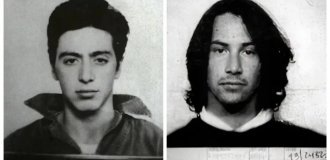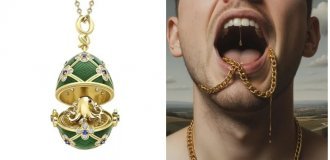We do not know exactly when the first caracca appeared, but as early as 1304, the Florentine chronicler Giovanni Villani claimed that Italian shipbuilders copied the design of the Baca coga, when building a ship referred to as the cocha.
Only a few exquisite pictorial accounts survive of the early kojas, but by 1340 the largest of these was known as the baronial koha, which was larger, with a deeper draft hull, than the original Basque koha. It almost certainly had two masts, carrying a combination of straight sails on the mainmast and a lateen sail on the mizzenmast. By the end of the 14th century, the term "carrack" was used by the English to describe Genoese merchant ships of this type, although there is no clear evidence that they sailed as far north as the British Isles. On the Iberian Peninsula, the same vessel was known as the nao, although the term was also used to refer to the Spanish version of the northern European hulk. In fact, throughout the 15th century, early karakkas, naos and halkis were all related to similar general ship types.

A small warship in Dover harbour, detail from a sketch (circa 1530). The ship has gun ports, while soldiers armed with various types of weapons are depicted standing on the combat decks of the bow and stern superstructures. (British Library, London)

Although there is evidence that two-masted kohi sailed the Mediterranean in the late 14th century, their first detailed mention in English written records is in 1410, when a two-masted Genoese carrack was captured by English pirates and claimed by the English Crown. ownership of this ship. Another similar karakka is mentioned in official documents for the next year. By 1417, Henry V (reigned 1413–22) purchased 8 Genoese carracks to form part of his nascent royal fleet. Six of them were described by contemporaries as vessels with a displacement of 500 tons, equipped with two masts - a mainmast and a “mezan” - a mizzen. In the last years of Henry's reign, English shipbuilders replenished his fleet with two-masted ships, thereby confirming that the kochia design was copied by the English royal shipbuilders. However, towards the end of Henry's reign, these same shipwrights took one step forward.

An English ship crashing on the rocks, fragment of the painting "Warwick Rolling" (circa 1480). Note the fabric of the awning (which was painted in Earl Warwick's colors of yellow and blue), and the large artillery guns located on the ship's waist. The full title of the “Warwick Riding” is “The Spectacle of the Birth, Life and Death of Richard Beauchamp, Earl of Warwick” - a series of sketches depicting incidents from the life of a noble Englishman. However, most historians simply refer to them as the "Warwick Rides". Although Richard Beauchamp died in 1439, the sketches were made much later and may have been drawn at the request of one of his children, possibly Anne, Countess of Warwick, wife of Edward IV's opponent at the Battle of Barnet. She died in 1493, and the styles of all the armor and ships depicted in the illustrations correspond in time to the last decade of Anne's life. Alternatively, these designs could have been produced at the request of her daughter, who became Queen Anne after her husband, Richard Duke of Gloucester, became King Richard III. She died in 1485, five months before her husband died at the Battle of Bosworth. (British Library, London)

A year after his victory over the French at the Battle of Agincourt (1415), Henry V ordered the construction of two new warships, one of which was built at Bayonne on the Aquitaine coast, and the other at Southampton in Hampshire. The Southampton ship was larger than the ship built at Bayonne, and when she was launched in 1418 she was noted to have displaced 1,400 tons. Little is known about this huge ship, called Grace Dieu, except for the few records of inventories carried out after she was mothballed in 1420. Its wreck was discovered near Barsledon on the River Hamble and has been examined and samples taken at various times since the mid-19th century. Examination of the wreck showed that its hull had a clinker skin (overlap), a keel about 125 feet long and 50 feet wide. This ship was larger in size than any other ship built in the British Isles before the 17th century. The captain of a Florentine galley was an eyewitness to the Grace Dew, and left evidence that the ship was about 184 feet long at deck level, with a mainmast 200 feet high and 22 feet in circumference.

Comparing the records with her wreck, it becomes clear that Grace Dew was an early carrack rigged with two masts - a large mainmast and a mizzen. In addition to this, the bowsprit protruded forward from its tall, tower-like bow superstructure. Based on contemporaneous images of smaller but similarly built early ships, we can argue that its stern superstructure (referred to as a "summer castle") was lower than its bow superstructure. It is interesting that the ship built in Bayonne was built using the technology used to build caravels, which confirms that, at least in the southeast of France, the Mediterranean school of shipbuilding had already supplanted all previously existing Northern European shipbuilding techniques, at that time like English shipbuilders, they continued to build ships, adhering to the traditional school. Unfortunately, very few documentary records of the English navy have survived to this day from the previous half-century reign of the York monarchs Edward V (reigned 1461-1483) and Richard III (reigned 1483-1485). This is why we have so little convincing evidence of the evolution of the English Royal Navy during these key decades.

What is clear is that financial difficulties and political instability meant that increasing the Royal Navy was a very low priority during this period. However, under Edward IV the fleet increased through the purchase and rebuilding of merchant ships. In 1480 it consisted of seven carracks and two ships - a caravel and a barque. Of the caraccas, two were of Spanish construction, while the rest were Portuguese. Now the difference between a karakka and a “ship” is not entirely clear, but in general, ships with a “full sailing rig” of a foremast, mainmast and mizzen mast were later called this. At that time they were rigged with square sails, and lateen rigging was only introduced from the 1480s, also at this time topsails were introduced on all three masts.

The caravel was smaller in size than a carrack with a smooth hull planking, carrying two or three masts, and later a lateen sail was installed on it. This type of ship was widely used by the Portuguese and later by the Spanish as a "ship of discovery". Finally, the barque was an entirely different type of three-masted vessel of undetermined size, although later barques were usually relatively small in size. All three masts carried a straight sail rig, the final sail being attached to the mizzen mast fore and aft, so it was like a square version of the lateen sail. The Caravel of Salcombe was sold immediately after the death of Edward IV, and the only remaining ship of two of her type was removed from the Royal Navy lists (a 14th-century term that did not change to "royal" navy" until 1660). Bark of Southampton was renamed Bonadventure at the end of the century when she was reclassified as a carrack. It is believed that this was due to her sailing rig rather than her hull design, which would have originally classified her as a barque.

Another notable feature of the 15th century Northern European carrack was the shape of its stern. The hull planking (or the ship's outer plating) was curved at the top at the stern, forming a more rounded stern of the ship than on ships of later construction. This feature can also be seen on the hulks of that time. From 1488 onwards this practice was discontinued to simplify ship construction, with the plating being attached to the ship's stern frames and a transom (flat) stern being added. This simplification became important when it came to building heavy ships that could withstand heavy artillery fire.

Warship "Henry Grace a'Dew"
One of the most ambitious warships built during the reign of the Tudor dynasty, its construction is likely a direct response to the construction of the Great Michael by King James IV of Scotland. Unfortunately, three decades passed before the ship was able to fire its cannons, spending most of its time in mothballs. The ship was built more for prestige than to have any military value, and in 1520 she escorted Henry VIII from Dover to Calais to meet Francis I at the Field of the Cloth of Gold. Even then, the ship's displacement prevented it from leaving or entering the harbor. While its appearance was impressive, the costs of operating it in peacetime were considered prohibitive, and it came to be seen as something of a "white elephant". The picture shows one of the forged iron breech-loading guns with which the ship was armed, mounted on a carriage that was recreated from the wreck of the Mary Rose.
Characteristics of the ship "Henry Grace a'Dew"
Warship "Henry Grace a'Dew" (1525)
Type: "Great Ship" (karakka), nicknamed "Great Harry". Built 1514 in Woolwich
Displacement: 1000 tons*
Keel length: about 130 feet
Deck Width: About 50ft
Armament: 80 guns (51 heavy, the rest swivel guns; the inventory list of weapons on board included a total of 112 guns, including handguns
Crew (1536): 700 people (including 400 soldiers and 40 gunners)
Notes on service: Rebuilt in 1539. Participated in the Battle of Portsmouth in 1545. Renamed Edward in 1547, destroyed by fire in 1553
* some early sources (based on various displacement calculation systems) give 1500 tons

Warship "Sovereign"
The Regent and Sovereign were the first warships built for the Tudor navy, and were later rebuilt on the River Hamble near Southampton under the supervision of Sir Richard Guildford, Master of Artillery. The Sovereign entered the fleet in 1489, but we know little about her service until she was refitted in 1509 - she was re-armed with an impressive complement of 14 heavy guns, as well as 54 light guns, mostly swivel guns. guns. He took part in the naval battle of Brest in 1513, when his name is mentioned among those ships that tried to board the French warship Maria la Cordillera. After being declared unfit for further naval service in 1521, he was left to rot at his mooring on the south bank of the River Thames at Woolwich, where his remains were found in 1912.
Characteristics of the ship "Sovereign"
Warship Sovereign (1512)
Type: "Great ship" (karakka), originally called Trinity Sovereign. Built in 1488.
Displacement: 800 tons*
Keel length: about 125 feet
Deck Width: About 40ft
Armament: 100 guns (most of them swivel guns and handguns) - 69 guns in 1509
Crew (1513): 700 people (including 400 soldiers and 40 gunners)
Notes on service: Rebuilt in 1509. Participated in the naval battle of Brest in 1512.
* Declared unseaworthy in 1521 and expelled from the navy






















